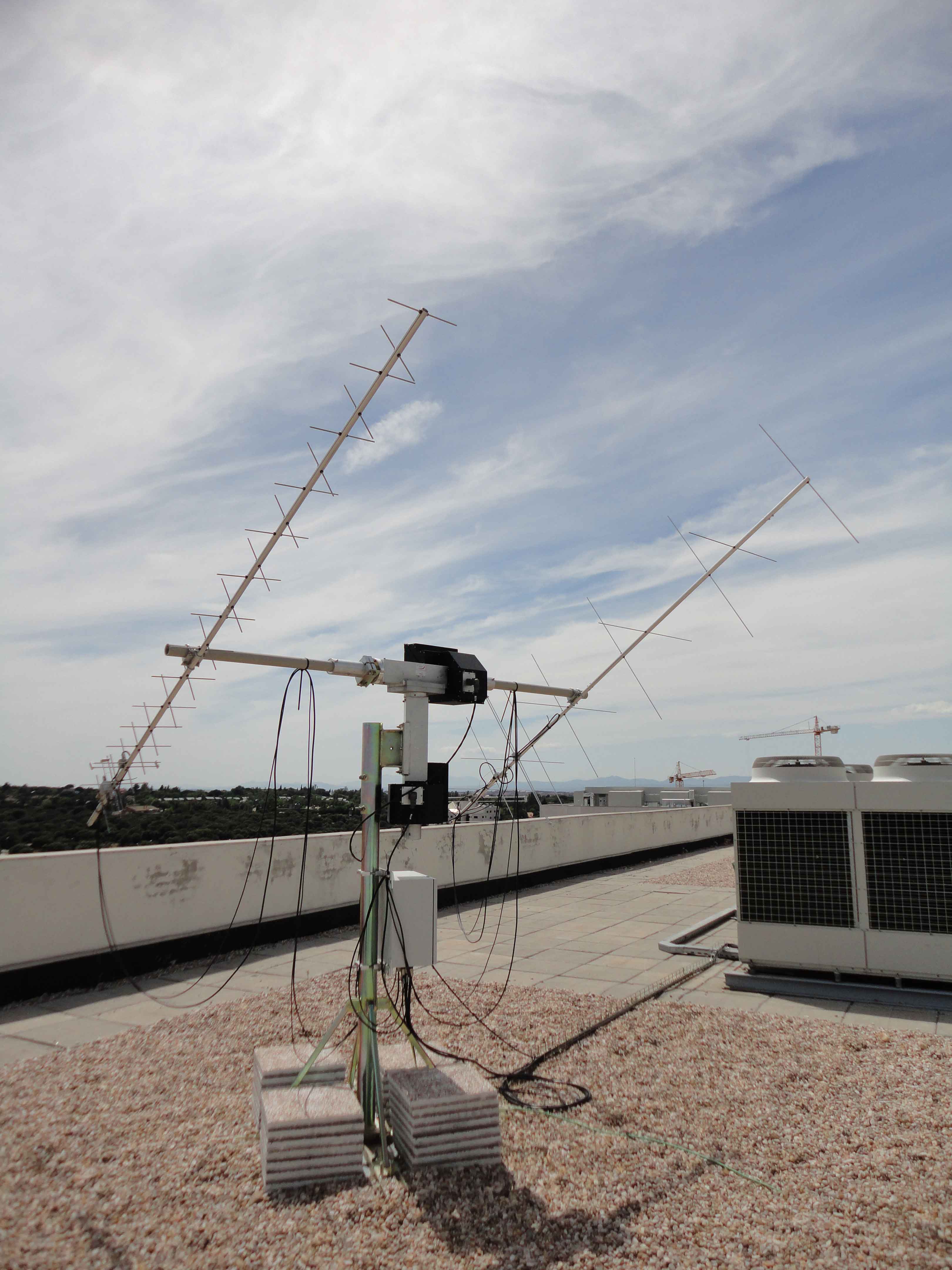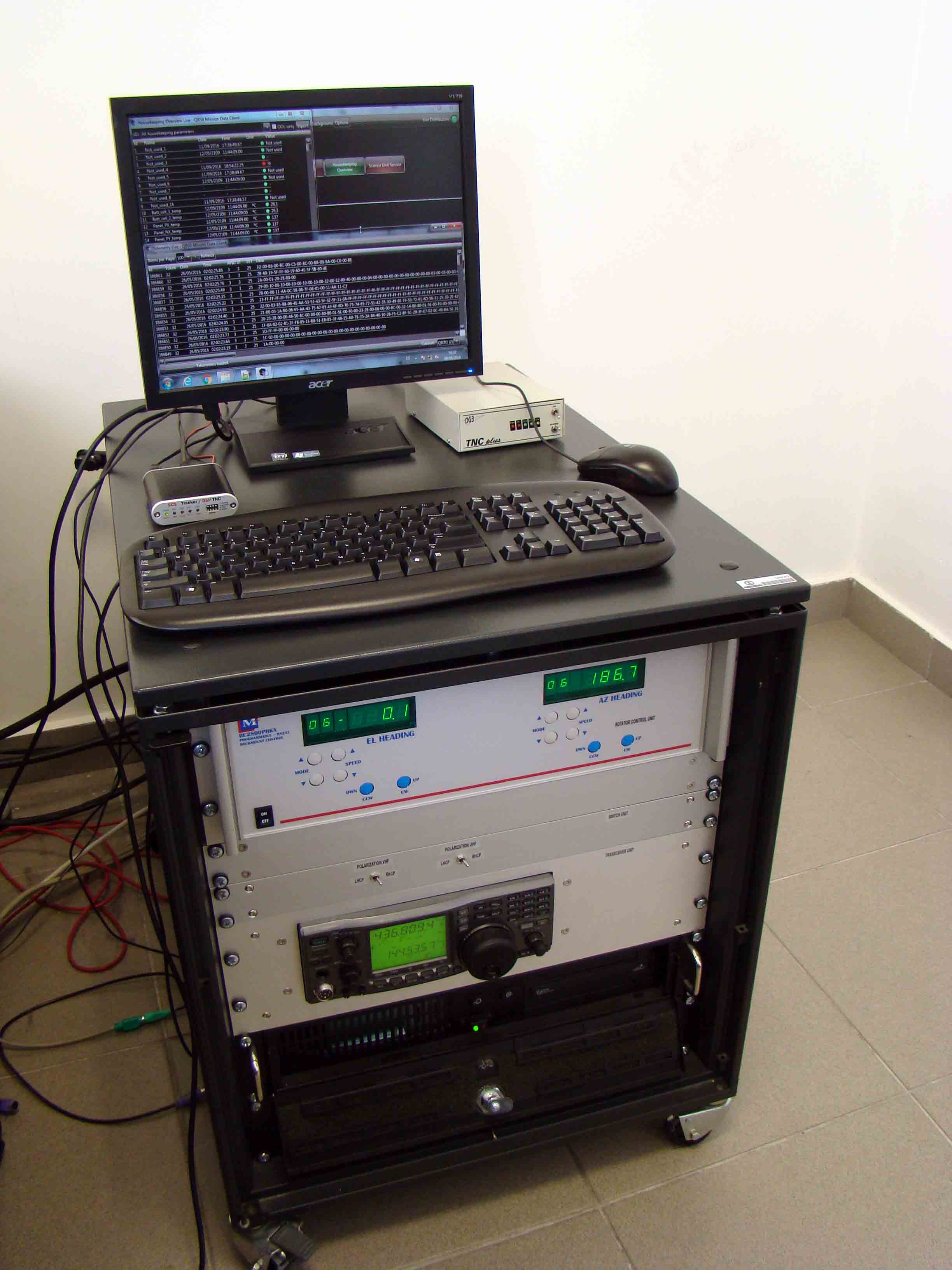Ground Station
E-USOC has a ground station for tracking amateur and educational satellites. This station was acquired for educational purposes. Its main objective is to offer internships and final degree projects related to satellite communication.
A high proportion of amateur satellites operate in the following frequency bands: 144-146 MHz, 435-438 MHz and 1260-1270 MHz; which constitute the operational ranges of the ground station’s radio. Owners and operators of amateur satellites usually publish their operational frequencies and modes, allowing the amateur radio community to listen, download and decode data from satellites.
Having the support and availability of amateur radio stations around the world is a significant advantage for some missions, as the coverage area is significantly expanded. This allows the downloading of larger amount of data which otherwise wouldn’t be possible with less number of ground stations assigned to the mission.
Features
The ground station is composed by the set of antennas, rotor, radio and computer. The set consist of two directional “Yagi” type antennas which have circular polarization, UHF and VHF respectively. These antennas perform well in Low Earth Orbit satellite passes (from 200 to 2000 Km of altitude). Antennas are connected to a LNA (Low Noise Amplifier) with 10-20 dB of gain, and mounted on a fiberglass mast. An ICOM IC 910H radio is responsible for signal demodulation when it is listening for the UHF y VHF frequencies; and for signal modulation when it is transmitting commands.
In order to establish the radio link with directional “Yagi” type antennas and, thus, getting effective satellite tracking; it is required to use rotors to position and direct them. Computer is equipped with an automatically driven software controller which handles rotor movement and radio settings. In this way the tracking is reliable and comfortable for the user. Computer has also installed a simple data packets decoder software for translating the signal received.
Activities
Ground station has been tested to receive telemetry from educational satellites with different frequencies and modulations –AFSK, BPSK, FSK 9600 bps under the standard G3RUH. Specifically, it has been part of the active download of the SwissCube mission and from precursor satellites of the QB50 mission, which is going to be a crucial part of the next E-USOC operations concerning QB50 framework activities.
The station was initially designed and, also, used for educational purposes for Universidad Politécnica de Madrid (UPM) students. Real time telemetry reading applications have done possible to develop the satellite tracking and planning applications. Overall, there are two final degree projects managed by the Escuela Técnica Superior de Ingenieros Aeronáuticos, one of them was done by an Escuela Técnica Superior de Ingeniería Aeronáutica y del Espacio (ETSIAE) student and the other one by an exchange student from Scotland.
The Association of Small Satellite Tracking is responsible for operating the station under the call sign EA4RCN and it is prepared to support QBito mission which involves one the CubeSats of the QB50 mission. QBito is the first CubeSat entirely developed by the Universidad Politécnica de Madrid (UPM).
Tracking and decoding in real time of the O / Oreos satellite using the E-USOC Ground Station.



